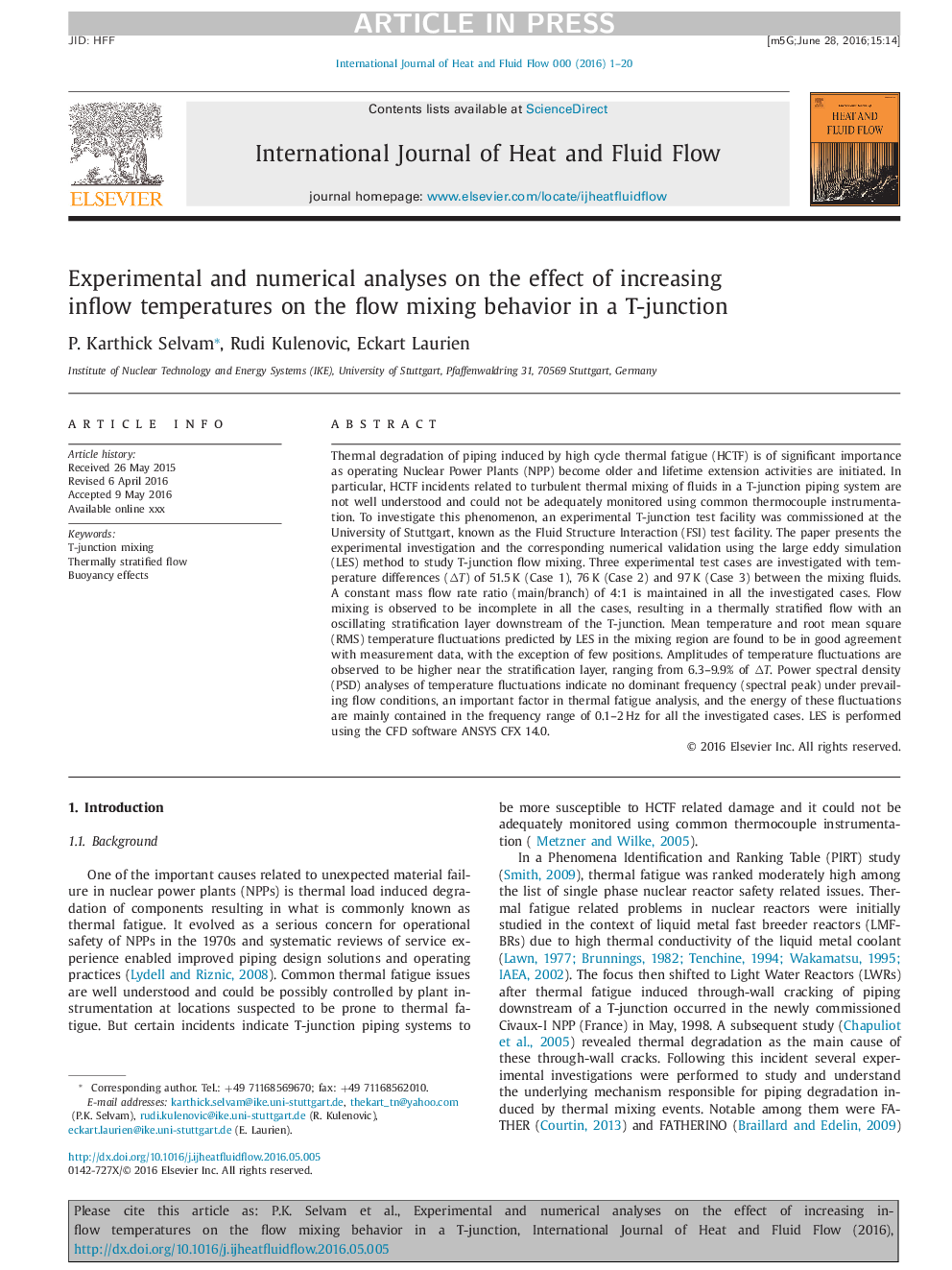| کد مقاله | کد نشریه | سال انتشار | مقاله انگلیسی | نسخه تمام متن |
|---|---|---|---|---|
| 4993340 | 1457619 | 2016 | 20 صفحه PDF | دانلود رایگان |
عنوان انگلیسی مقاله ISI
Experimental and numerical analyses on the effect of increasing inflow temperatures on the flow mixing behavior in a T-junction
دانلود مقاله + سفارش ترجمه
دانلود مقاله ISI انگلیسی
رایگان برای ایرانیان
کلمات کلیدی
موضوعات مرتبط
مهندسی و علوم پایه
مهندسی شیمی
جریان سیال و فرایندهای انتقال
پیش نمایش صفحه اول مقاله

چکیده انگلیسی
Thermal degradation of piping induced by high cycle thermal fatigue (HCTF) is of significant importance as operating Nuclear Power Plants (NPP) become older and lifetime extension activities are initiated. In particular, HCTF incidents related to turbulent thermal mixing of fluids in a T-junction piping system are not well understood and could not be adequately monitored using common thermocouple instrumentation. To investigate this phenomenon, an experimental T-junction test facility was commissioned at the University of Stuttgart, known as the Fluid Structure Interaction (FSI) test facility. The paper presents the experimental investigation and the corresponding numerical validation using the large eddy simulation (LES) method to study T-junction flow mixing. Three experimental test cases are investigated with temperature differences (âT) of 51.5Â K (Case 1), 76Â K (Case 2) and 97Â K (Case 3) between the mixing fluids. A constant mass flow rate ratio (main/branch) of 4:1 is maintained in all the investigated cases. Flow mixing is observed to be incomplete in all the cases, resulting in a thermally stratified flow with an oscillating stratification layer downstream of the T-junction. Mean temperature and root mean square (RMS) temperature fluctuations predicted by LES in the mixing region are found to be in good agreement with measurement data, with the exception of few positions. Amplitudes of temperature fluctuations are observed to be higher near the stratification layer, ranging from 6.3-9.9% of âT. Power spectral density (PSD) analyses of temperature fluctuations indicate no dominant frequency (spectral peak) under prevailing flow conditions, an important factor in thermal fatigue analysis, and the energy of these fluctuations are mainly contained in the frequency range of 0.1-2Â Hz for all the investigated cases. LES is performed using the CFD software ANSYS CFX 14.0.
ناشر
Database: Elsevier - ScienceDirect (ساینس دایرکت)
Journal: International Journal of Heat and Fluid Flow - Volume 61, Part B, October 2016, Pages 323-342
Journal: International Journal of Heat and Fluid Flow - Volume 61, Part B, October 2016, Pages 323-342
نویسندگان
P. Karthick Selvam, Rudi Kulenovic, Eckart Laurien,